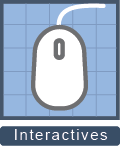| Standard Correlation Map | |||||||||||||||||||
|---|---|---|---|---|---|---|---|---|---|---|---|---|---|---|---|---|---|---|---|
| Code | Description | Location | Type | Link | |||||||||||||||
NGSS-HS-SEP | Science and Engineering Practices |
||||||||||||||||||
NGSS-HS-SEP-1 | Asking Questions and Defining Problems. Asking questions and defining problems in grades 9-12 builds from grades K-8 experiences and progresses to formulating, refining, and evaluating empirically testable questions and design problems using models and simulations. | ||||||||||||||||||
NGSS-HS-SEP-1-1 | Evaluate questions that challenge the premise(s) of an argument, the interpretation of a data set, or the suitability of a design. | ||||||||||||||||||
NGSS-HS-SEP-1-1-1 | Evaluate questions that challenge the premise(s) of an argument. |
| |||||||||||||||||
NGSS-HS-SEP-1-1-2 | Evaluate questions that challenge the interpretation of a data set. |
| |||||||||||||||||
NGSS-HS-SEP-1-1-3 | Evaluate questions that challenge the suitability of a design. |
| |||||||||||||||||
NGSS-HS-SEP-2 | Developing and Using Models. Modeling in 9-12 builds on K-8 and progresses to using, synthesizing, and developing models to predict and show relationships among variables between systems and their components in the natural and designed worlds. | ||||||||||||||||||
NGSS-HS-SEP-2-1 | Develop a model based on evidence to illustrate the relationships between systems or between components of a system. |
| |||||||||||||||||
NGSS-HS-SEP-3 | Planning and Carrying Out Investigations. Planning and carrying out investigations in 9-12 builds on K-8 experiences and progresses to include investigations that provide evidence for and test conceptual, mathematical, physical, and empirical models. | ||||||||||||||||||
NGSS-HS-SEP-3-1 | Plan and conduct an investigation individually and collaboratively to produce data to serve as the basis for evidence, and in the design: decide on types, how much, and accuracy of data needed to produce reliable measurements and consider limitations on the precision of the data (e.g., number of trials, cost, risk, time), and refine the design accordingly. | ||||||||||||||||||
NGSS-HS-SEP-3-1-1 | Plan and conduct an investigation individually. |
| |||||||||||||||||
NGSS-HS-SEP-3-1-2 | Plan and conduct an investigation collaboratively. |
| |||||||||||||||||
NGSS-HS-SEP-3-1-3 | Plan and conduct an investigation, and in the design decide on types of data needed. |
| |||||||||||||||||
NGSS-HS-SEP-3-1-4 | Plan and conduct an investigation, and in the design decide how much data are needed. |
| |||||||||||||||||
NGSS-HS-SEP-3-1-5 | Plan and conduct an investigation, and in the design decide the accuracy of data needed to produce reliable measurements. |
| |||||||||||||||||
NGSS-HS-SEP-3-1-6 | Plan and conduct an investigation, and in the design consider limitations on the precision of the data. |
| |||||||||||||||||
| 886 |

 | 
|














